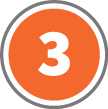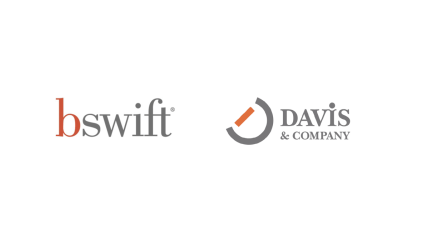
Imagine you’re preparing to launch a new onboarding tool that will impact all recruits, new hires and people managers. But there’s a catch: Only managers who are actively hiring employees are interested in onboarding communication right now. The rest don’t care, so they trash the emails and skip the workshops. When it comes time to hire, they’re lost!
Here's the challenge: Not all change is immediate for every employee. In fact, many changes affect groups of employees at different times based on variables such as job role, location and priorities.
How can you convince employees to pay attention to change communication when they’re not affected by a change immediately?
The short answer: You can’t!
The longer, more helpful answer: Target your communication efforts to those who are impacted now. Then, plan just-in-time communication for employees who will be affected later.
Follow these five steps to ensure all employees receive the knowledge they need to work in new ways when the time is right.
 |
Target the first waveStart by focusing your change engagement efforts on employees who are impacted right now. Work with your project team to define groups that will be the first to do something differently and target communication to those employees. Your goal is to build understanding, buy-in and deep engagement … right now. Break out your change communication toolbox and plan activities that will give them a chance to learn, ask questions and become familiar with the change. Offer hands-on training, knowledge resources, role-specific workshops and two-way outlets (such as live chats and Q&A sessions) when new ways of working are required. For example, when a global financial institution was upgrading its HR Information System, we provided step-by-step training and how-to guides for HR Business Partners who needed to use the system’s backend. Pro tip: For technology changes like this, collaborate with your project team to ensure a hypercare solution is in the works. (Hypercare is the period of time immediately following a system launch when an elevated level of support is made available to help users adopt the new system. This includes answering questions, providing instruction and troubleshooting system issues.) Lastly, remember senior leaders! Provide them with change communication tools so they can trickle down the right information to impacted employees at the right time. |
 |
Build others’ awarenessNow it’s time to consider the next waves of the change—those who will be impacted later. During the early days of your communication efforts, focus on keeping these groups apprised of the vision and timeline for the project. But don’t worry about building their knowledge or encouraging action yet. For this audience, leverage one-way communication tools, such as articles, newsletters, intranet banner ads and workplace communication (digital signs, posters and bulletin board signage), to publish company-wide, high-level announcements. Send role-based email overviews to let these employees know when they can expect the change to impact them and how they’ll be supported. As you develop knowledge resources, provide links so curious employees can access detailed information at any time. |
 |
Identify a trigger pointHere’s where your audience-specific planning makes the biggest difference. Collaborate with your project team to identify a trigger point: the moment when employees will be impacted by the change in the future. Then develop a communication solution for that event to provide employees with just-in-time information and resources they will need to take action. This approach will help you build employees’ knowledge and engagement at the time of impact—just when they need it. Here are two examples:
|
 |
Develop a long-term solutionIn addition to providing employees with just-in-time communication, it’s also critical to provide easily accessible information and resources they can find at any time. Imagine a hiring manager one year later thinking, “It’s been a while since I hired someone. Now where do I find that process?” Develop a site or document repository for all your training and knowledge resources, and ensure they are easy to find. Hint: Use the right keywords in headlines and document titles so they are easily searchable. For example, employees won’t search for “HR Information System instructions.” They will search for “How to update my paycheck address.” Provide links to these resources in the most relevant places. In our onboarding example, we provided links to how-to instructions on the homepage of the new onboarding system. For technology changes, work with your project team to ensure all system-generated notifications drive employees to relevant resources. |
 |
Measure and repeatThe last and most important step in your change communication plan is to measure and adjust your plan as needed. Start by assessing if employees are using the new system or employing new ways of working. Then measure employee participation in communication and training by monitoring the use of resources over time. Be sure to check in after milestones, such as launching a change to a new group of employees. Conduct surveys to gauge employee awareness, understanding and ability to take action. Then follow these up with focus groups to dig deeper into the results. For example, if you learn that employees do not find live trainings helpful, hold focus groups to ask what they didn’t like about the training and what else they need to be successful. As you gather participation metrics and effectiveness data over time, use this information to update your communication approach. Employees aren’t reading emails? Try shortening the copy, adding images and videos, or using another channel like Yammer. E-learning sessions falling flat? Schedule more live and in-person trainings to give employees the ability to interact and ask questions. |
Put your plan in motion
A communication plan that considers how employees experience change in different ways will help design communication that makes a difference. Take the time to understand when and how each employee group will be impacted, and you’ll be better prepared to provide them with relevant communication and resources—what they need to take action.
Want to learn more about change communication? Read our book, Change communication made easy.






